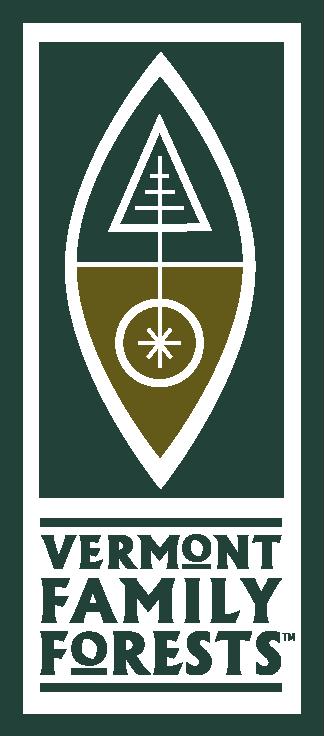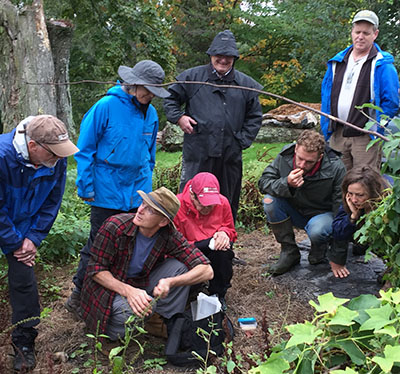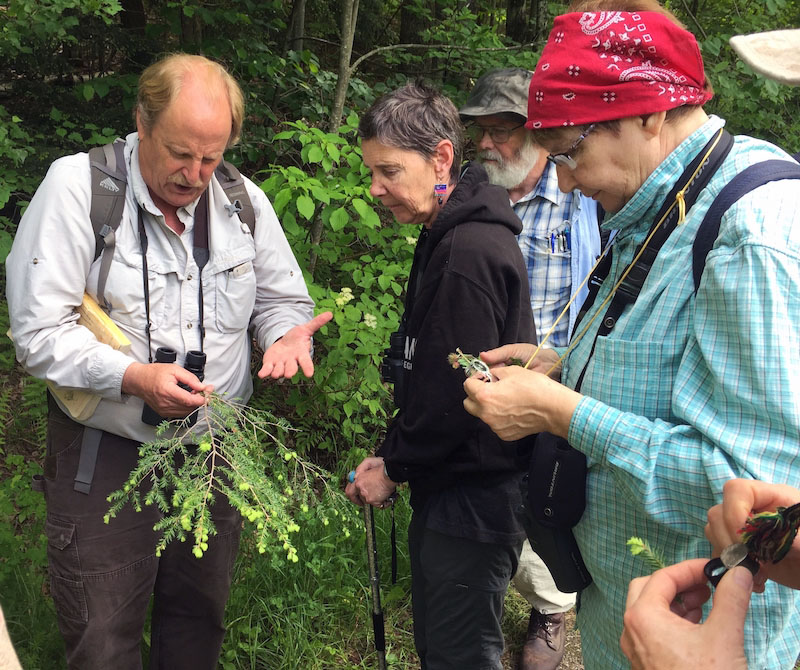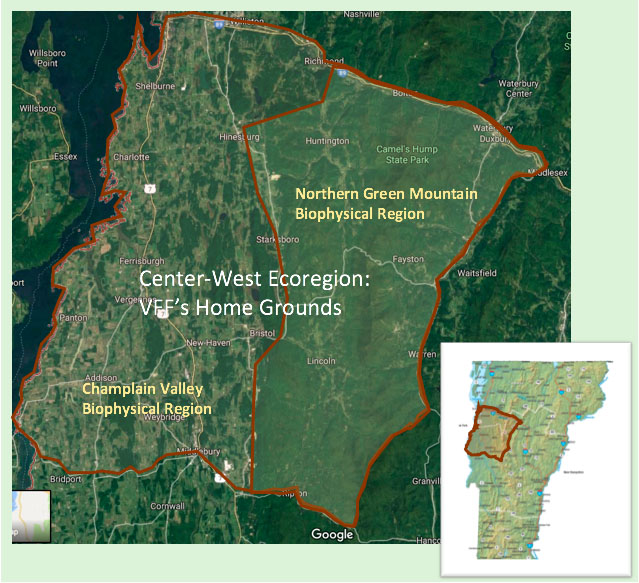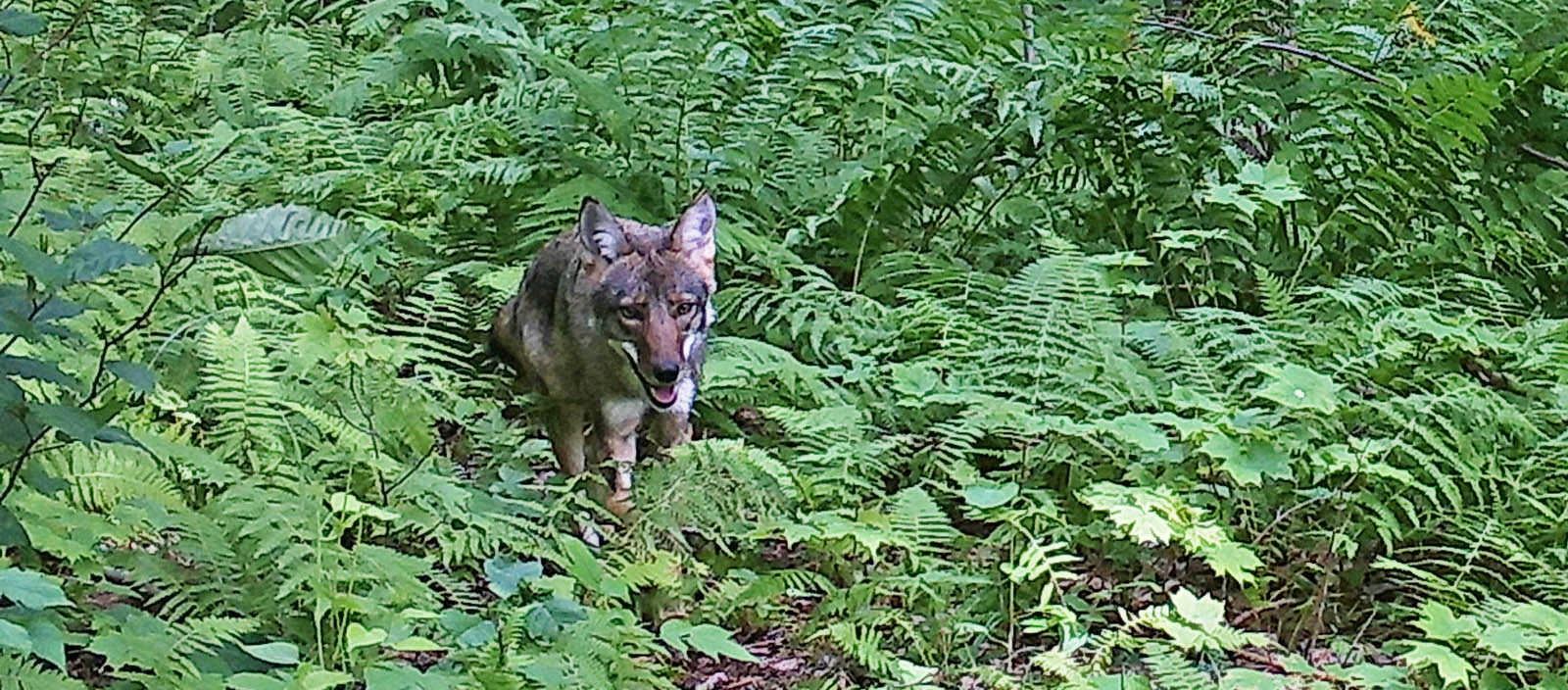
Vermont Family Forests deeply values hunters as conservation partners on the more than 900 acres of land we have the privilege of holding, and we welcome their presence and keen observations of the land. We allow hunting on VFF lands by written permission, a process that helps us connect directly with hunters and share information back and forth. Each year some 25-30 hunters request and receive permission to hunt particular game species on those lands—namely white-tailed deer, wild turkey, ruffed grouse, and woodcock. The permission agreement stipulates that the hunters agree NOT to hunt or trap black bear, bobcat, coyote, fisher, moose, raccoon, red and gray fox, and gray squirrel.
At the end of the year, we send each hunter a survey to learn about what they’ve seen, heard, hunted for, and harvested. Our latest survey yielded an important question. Why don’t we allow the hunting of coyotes? The hunter felt that coyotes were the reason he saw little evidence of rabbit or grouse in the forest. We’re glad for the opportunity to offer our perspectives.

In this place we now call Vermont, Euro-American settlers established their first permanent settlements in the 1700s. In the language of population ecology, we could say that they expanded their range north into Vermont at that time. By the late 1800s, settlers had extirpated (made locally extinct) both timber wolves and mountain lions—this land’s native large predators. Though the Vermont Agency of Natural Resources fields scattered reports of wolf and mountain lion sightings each year, there are no known resident populations of these large predators.
In the ecological vacuum created by the absence of these top predators, coyotes moved into the state. Before European settlement, their range lay west of the Mississippi River, but they expanded their range east as settlers cleared land and killed off large predators in the eastern US. The first reports of coyotes in Vermont surfaced in the 1940s. As coyotes expanded east, they intermixed with canid cousins. DNA analysis shows the eastern coyote’s genetic makeup as 64% coyote, 13% gray wolf, 13% eastern wolf, and 10% domestic dog.
Like humans, eastern coyotes are phenomenally adaptable omnivores. They eat small rodents, plants, fruit, deer, snowshoe hare, cottontail rabbits, woodchucks, insects, amphibians, reptiles, birds, and more. People have long seen coyotes as a threat to domestic livestock and as competition for wild game. Because of that, humans kill more than 400,000 coyotes across the country every year.
This intensive hunting achieves a result far different from its intended aim. That’s because under normal conditions, only the dominant (“alpha”) male and female in a coyote pack breed. When one or both alphas are killed, other coyotes in the pack vie for dominance, breeding at younger ages, birthing many more pups, and often spreading into new territory. In most cases, the fewer coyotes you kill, the fewer you’ll have.
But that’s not what motivates our hunting policy. Research overwhelmingly suggests that the best way to nurture healthy natural communities and wildlife populations is to restore and protect healthy habitat. At Vermont Family Forests, protecting forest community health is at the core of everything we do.

The lion’s share of the land we hold came to us with conservation easements that stipulate that the forestlands shall remain forever wild. As a result, those lands are growing toward mature, climax forest habitat, interspersed with small, wind-created openings. In such a forest, species that tend to live in young forest habitat—like snowshoe hare and ruffed grouse—will likely become less abundant, at least until a major storm event blows open big holes in the forest canopy. With climate change, these powerful storm events are becoming increasingly common.
In these dynamic forest communities, coyotes add to wildlife species richness while performing some of the ecological tasks once performed by wolves and mountain lions. By doing so they add to the forest’s capacity for self-renewal. We celebrate them, and deeply appreciate their presence.
On VFF’s lands, the day may come when mountain lions and wolves are once again top predators. That would be a sight to behold! Until then, both coyotes and human hunters help fill that niche, and we are grateful to them both for being here.
